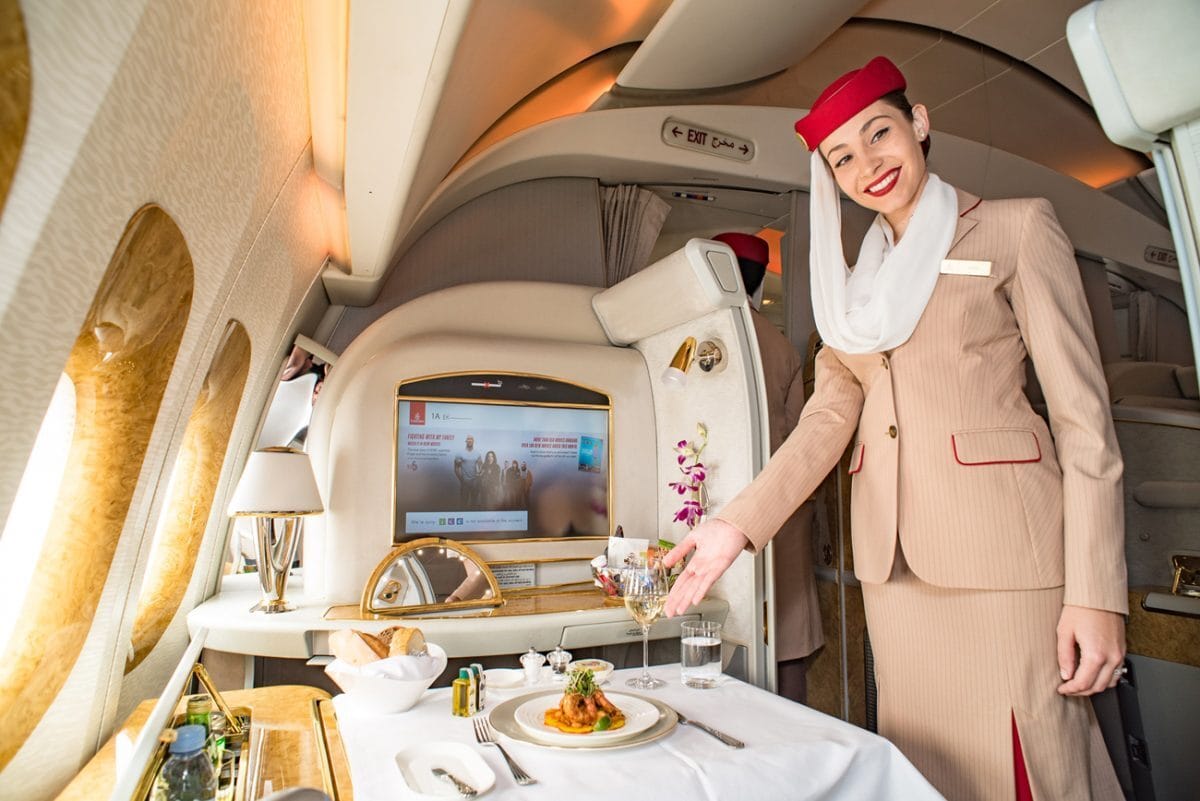- The Galley
- Posts
- Gulf region dispatch: When hospitality meets technology
Gulf region dispatch: When hospitality meets technology

Emirates Airlines setting the standard for customer service 📷️ Courtesy of Emirates
By Fernando Moreira
You can tell a lot about a culture from the way you're treated in a restaurant.
During a recent business trip to Oman, I walked through the buffet area of my hotel nearly every night on my way to meet a colleague. One evening, the chef stopped me. “I see you walk through here all the time,” he said, “but you’ve never had dinner with us.”
I explained that my friend’s wife wasn’t into seafood, and it was seafood night. He shook his head: “No, I’m saying there’s no problem. Whatever she wants, I’ll make.” And he meant it. That night, she had personally prepared pasta and short ribs, overseen by the chef himself. No extra charge, no fuss.
In the Gulf states, that kind of service — authentic, and genuinely guest-focused — goes beyond good hospitality. It’s a cultural operating system. Whether it’s the hotel concierge, the Uber driver, or the flight attendant, there’s a deep, ingrained commitment to service excellence.
What struck me on my month-long trip through the region was how that ethos is now being paired with a growing appetite for technology in airline catering. The biggest carriers in the Middle East have already set global standards for in-flight service. But behind the scenes, they’re recognizing the value of upgrading technology in order to take their customer service and efficiency to the next level.
Airlines globally are handicapping themselves by running catering operations with 25-year-old technology. Excel-based workflows are still the norm, as are single-user bottlenecks where one person manually inputs data for an entire flight’s loading plan. That is no longer an experience anybody wants or needs to endure. Technology allows for growing flexibility and multiple users.
“You mean we don’t need to email spreadsheets anymore?” one team member asked. It was a moment that perfectly captured the gap between the high-gloss experience that passengers enjoy and the inefficient, manual systems that still underpin many catering operations.
But the resistance to new technology is falling fast, based on my conversations with dozens of airline and catering operation execs during my trip to Oman.
Gulf region airlines and their catering arms are actively seeking out platforms that bring the same level of precision and personalization they offer in-cabin to the back-end logistics of food service. We’re talking about real-time collaboration, system-wide visibility, and data-driven decisions that reduce waste, improve accuracy, and free up staff to focus on what they do best: creating amazing experiences.
It’s not just about efficiency. It’s about unlocking the next level of hospitality.
For example, Emirates recently announced a $16 million investment in electric catering trucks equipped with sensors and monitoring equipment. When that kind of infrastructure is combined with smart planning tools and agile workflows supported by AI, you don’t just move faster – you elevate the entire flying experience. You can adapt menus more quickly, personalize offerings, and respond to last-minute changes without chaos or delay.
The Gulf region is uniquely positioned to lead this revolution. With deep financial resources, a clear ambition to be best-in-class, and a service culture that’s already world-beating, its airlines have all the ingredients. The missing piece has been technology — and now that is falling into place, too.
This should be a wake-up call for the rest of the industry. If carriers that already dominate passenger experience are now investing heavily in the systems that underpin it, others can’t afford to wait. The future of airline catering will belong to those who can combine operational intelligence with the human touch — and the Gulf region has a clear head start.
Fernando Moreira is the Chief Experience Officer for In Flight Catering Software.